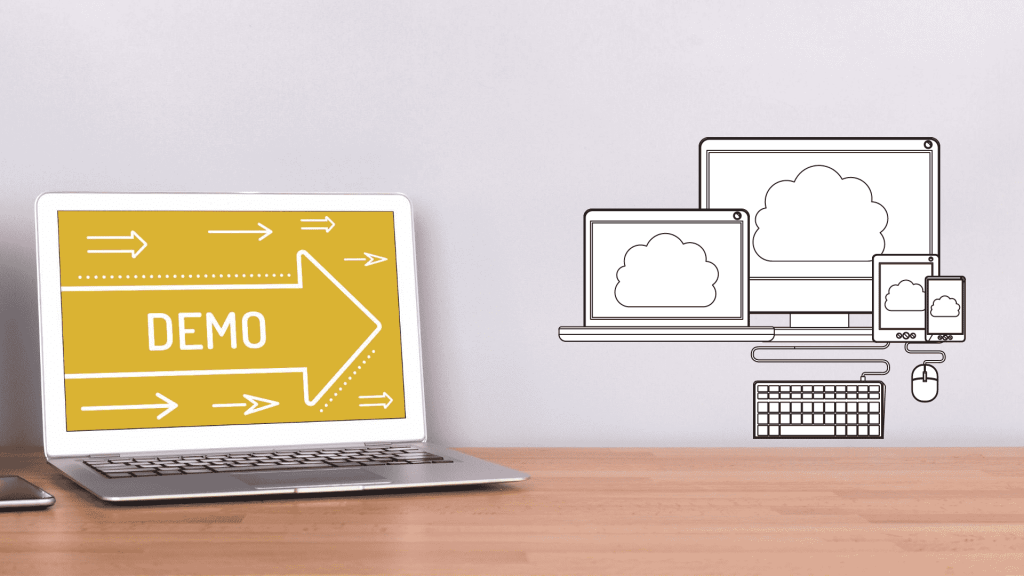Are you in the market for an electronic health record (EHR)? Finding the right EHR for your behavioral health organization can be a daunting task.
There are many EHR options that offer a wide range of features and capabilities. It can be difficult to know which one would suit your operation best.
When researching different EHR vendors, looking at designs and functions is an important first step. There’s no better way to learn about an EHR’s functionality than seeing it in action.
An EHR software demo is the best way to get an idea of how an EHR works, and how well it would fit your facility’s needs.
We recommend you demo multiple platforms before making a decision.
Why? For these three reasons:
- See how the platform works in real-time
- Test how a vendor’s platform can accommodate your facility’s process
- Get a feel for a specific company and their culture/employees
Continue reading for more information on how demos are crucial to making the right EHR decision.
.jpg)
Get a Behind the Scenes Look at the EHR
Have you been researching different EHR vendors? If so, you may have noticed that much of the information they provide on their websites is written.
There is often minimal visual content of the platform itself. As a result, it may be easy to understand what the EHR does on a conceptual level, but quite difficult to visualize that functionality.
After reading the info pages of a handful of EHR vendors, they can all begin to sound pretty similar. It may seem like each platform you are researching offers the same things.
However, how one EHR company to the next delivers these features can differ greatly.
A demo is the only way to see how the information on a vendor’s website translates into software. Every demo structure will be different depending on the vendor.
Generally, the initial demos are introductory. The presenters take you through a cursory look at basic functions, as well as specific aspects upon your request.
Initial demos provide you with the important opportunity to see how an EHR looks and acts in real-time. At this stage, you can evaluate the ease of use of the platform.
Two things to be mindful of during introductory demos:
EHR Screen Appearance/Interface Configuration:
Even though an EHR is a highly technical software, it should be designed in a way that promotes ease of navigation and user acceptance.
An interface that is streamlined and aesthetically pleasing can play a big role in your staff’s acceptance of the EHR. Clunky or unwieldy platforms can be a barrier when trying to train staff with varying levels of technological skills.
Intuitive Design/Intelligent Workflows:
An EHR software demo gives you a chance to see how intuitive and efficient an EHR is. Pay close attention to the quality of a platform’s workflows.
Does the platform streamline computing tasks by cutting down on the number of clicks it takes to get to the desired screen? Does the EHR present decision-critical information through intelligent automation? Is the platform an enterprise software, or do some features require third party integration?
Sandbox Access
After you have completed a few demos with a prospective EHR vendor, you may have the option to request sandbox access to their platform. Sandbox access describes an autonomous, yet controlled test drive of an EHR.
Some vendors can configure a paired down version of their EHR for your staff to explore in more depth. The most instructive sandbox environment is one that tailors access in a way that mirrors your facility’s processes.
Certain vendors even incorporate your facility’s documentation (assessment forms, levels of care structure, real staff names, etc.) into the sandbox. In this way, you can get a sense of what your processes would look like in that specific platform before making a purchase.
Experienced vendors know that sandbox access is supposed to give a facility an instructive taste of the software. They should make an effort to avoid overwhelming testers with the full power of their EHR.
Instead, it is a best practice to establish parameters on testers’ access so they do not get lost or bogged down in the larger platform. For example, some vendors choose to limit access based on your facility’s desired features and functions.
Ideally, testers will be able to poke around the platform independently for an extended demo period (typically around a week). After the testers “play in the sandbox,” they should have a good feel for how well the EHR will facilitate your facility’s operation.

When done correctly, sandbox access can be an awesome tool for decision-makers.
Purchasing an EHR, or migrating from one system to another, is a choice you should be able to make with as much information as possible. Sandbox access empowers shot callers to weed out platforms that would not serve your facility, and identify the ones that have the most promise.
To put in another context, you may test drive a dozen cars before signing the right three-year lease for you. Your facility should be granted similar opportunities for due diligence when looking for a permanent EHR.
Get a Feel for the EHR Vendor
Demoing an EHR also gives you a chance to get to know the people working for the vendor. Even though demos are preliminary exercises, you can glean valuable information from meeting with the vendor’s staff.
Some insights you can take away from meeting with the demo team are:
- The vendor’s philosophy and approach re: EHR software
- What a working relationship with the vendor would be like
Transparency is the key to developing positive customer relationships. A demo is an opportunity for the vendor’s staff to be open and honest about their EHR.
That doesn’t mean a vendor should simply tell you how great their platform is. Demos are meant to be exploratory in nature so that you can gather information for this important purchase. Vendors that are confident in their platform are comfortable letting their EHR speak for itself.
EHR vendors with effective platforms will always offer a solution to the ways in which they may not be able to accommodate your facility’s process 100%. It is a good sign when the demo team does not shy away from these instances.
Instead, vendors should present alternatives for how they can best meet your facility’s needs. If an EHR vendor makes an effort to present adjustments during the demo stage, it is a good indication that they will be open to collaborating on future needs in a customer/vendor relationship.

An EHR Software Demo with AURA
After 16 years in the industry, the Sigmund team has hundreds of successful demos under their belt. Our current demo team is comprised of knowledgeable and dedicated staff. They are product specialists with a vast knowledge of AURA, Sigmund’s enterprise software solution.
The Sigmund team has experience presenting demos for customers in all phases of their buying process. Whether you want a brief introduction or sandbox access to see how AURA can fit your facility’s specific needs, Sigmund can deliver an informative EHR software demo.
We are very confident in our proven demo process. However, the demo team is always learning and incorporating new ways to optimally educate customers on AURA’s powerful platform.
If you’d like to speak to one of our knowledgable professionals about the demo process here at Sigmund, click here! And if you want to experience the power of AURA in real-time, schedule a demo today!


